 | Benjamin Greenleaf - Arithmetic - 1849 - 388 pages
...the number of common differences, the quotient will be the common difference. Thus 16 -;- 8 = 2 is the common difference. RULE. — Divide the difference of the extremes by the number of terms less one, and the quotient is the common difference. 1. The extremes are 3 and 45, and the number of terms... | |
 | James Bates Thomson - Arithmetic - 1849 - 438 pages
...12 hours? 604. To find the common difference, when the extremes and the number of terms are given. Divide the difference of the extremes by the number of terms less 1, and the quotient will be the common difference required. OBS. The truth of this rule is manifest from... | |
 | George Roberts Perkins - Arithmetic - 1849 - 344 pages
...the first term, the last term, and the number of terms, to find the common difference, we have this RULE, Divide the difference of the extremes by the number of terms, less one. EXAMPLES. 1. The first term of an arithmetical progression is 5, the last term is 176, and the... | |
 | J. M. Scribner - Mechanical engineering - 1849 - 286 pages
...difference 5 * 20-1 = 19 and 19x^9^; and 91+1 = 10^. Ans. Gicen the Number of Terms and the Extremes, to find the Common Difference. Rule. — Divide the difference of the extremes by one less than the number of terms. Example. — The extremes are 3 and -26, and the number of terms... | |
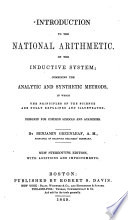 | Benjamin Greenleaf - Arithmetic - 1849 - 336 pages
...quotient will be the common difference. Thus, 27-:-9 = 3, the common difference. Hence the following RULE. — Divide the difference of the extremes by the number of terms less one, and the quotient is the common difference. EXAMPLES FOR PRACTICE. 1. The extremes of a series... | |
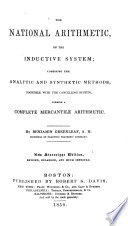 | Benjamin Greenleaf - Arithmetic - 1850 - 368 pages
...the number of common differences, the quotient will be the common difference. Thus 16 -5- 8 = 2 is the common difference. RULE. — Divide the difference of the extremes by the number of terms less one, and the quotient is the common difference. 1. The extremes are 3 and 45, and the number of terms... | |
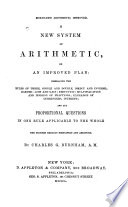 | Charles Guilford Burnham - 1850 - 350 pages
...238. — When the extremes and number of terms are given, to find the common difference, we have this RULE. Divide the difference of the extremes by the number of terms less 1, and the quotient will be the common difference. 7. If the first term of a series be 3, the last term... | |
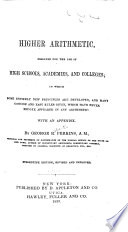 | George Roberts Perkins - Arithmetic - 1850 - 356 pages
...the first term, the last term, and the number of terms, to find the common difference, we have this RULE. Divide the difference of the extremes by the number of terms, less one. EXAMPLES. 1 . The first term of an arithmetical progression is 5, the last term is 176, and the... | |
 | Roswell Chamberlain Smith - Arithmetic - 1850 - 314 pages
...•*- 5= 5 years, the common difference. A. 5 years. 1 1 . Hence, to find the common difference, — Divide the difference of the extremes by the number of terms, less 1, and the quotient will oe the common difference. 12. If the extremes be 3 and 23, and the number of... | |
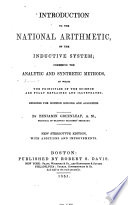 | Benjamin Greenleaf - 1851 - 332 pages
...quotient will be the common difference. Thus, 27 -fr- 9 = 3, the common difference. Hence the following RULE. — Divide the difference of the extremes by the number of terms less one, and the quotient is the common difference. • EXAMPLES FOR PRACTICE. 1. The extremes of a series... | |
| |